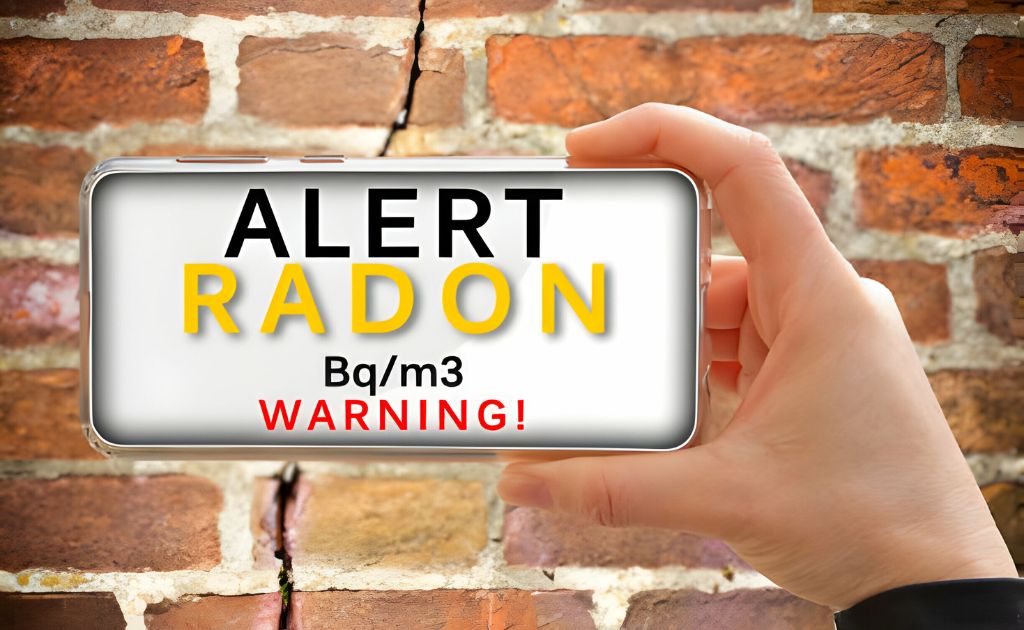Posts

Seasonal Changes and Radon Levels: What’s the Connection?
They say to get your home tested for Radon – especially in Winter.
Maybe it has to do with the fact that indoor Radon levels increase exponentially in colder months.
There are different theories about the whys.
One being that there’s not enough ventilation, causing the Radon levels to rise in a home during winter. There are more, and we’ll discuss each in detail.
But before we get into why indoor Radon levels increase during winter, we need to establish how seasons affect said Radon levels.
So throw on your detective hat, pick up that looking glass, and let’s discuss indoor Radon levels, seasonal changes, and why we see a spike during winter. And if you, a Texan, need Radon mitigation.
Different Radon Levels
You might know that Radon is released when some radioactive material decomposes in the soil. That means the Radon concentration (level) in different areas will be different depending on the decomposition rate and the amount of material present.
On average, we notice an outdoor Radon concentration of about 0.4 pCi/L. Continuous wind currents, upward movement, and a vast volume to dilute into are some of the reasons for this relatively low concentration – especially when compared to indoor levels.
Talking about indoor levels, we see an average of 1.3 pCi/L in the USA. For Texas, that average increases to a median value of 3.26 pCi/L.
Now EPA recommends keeping the radon levels between 2 pCi/L and 4 pCi/L, but you should know that even these “recommended” levels aren’t safe. Enough concentration and regular exposure can cause serious –and in some cases irrecoverable– damage to your lungs.
So, you have to get a radon inspection when buying a house to avoid any potential health risks. A certified inspector will check for radon levels and provide professional recommendations to mitigate it.
Again, we’re getting off the course. We were to discuss
Seasonal Changes and Radon Levels
Radon levels are higher in winter, not a shocker. But what about other seasons when the concentration goes above or below the average?
In summer
We see a drop in radon levels as the warmer weather approaches. It has nothing to do with the temperature itself. The actual reasons behind the relatively lower concentration are increased ventilation and reduced pressure difference between indoor and outdoor air.
You see when there’s a high enough air pressure difference, a suction effect happens that pulls ground-level radon out and into the house through cracks in the basement.
During summer, houses are better ventilated, meaning air flows freely, and there’s less pressure buildup to cause that suction. However, some air conditioners do create negative pressure, which can somewhat trigger that suction, but not to the extent we see during winter.
FYI: This is an oversimplification. If you think your home needs radon mitigation, you have to get it no matter the season.
In Rainy Season
A general misconception is that rain increases indoor radon levels. Rain and radon have a very complex relationship with many deciding factors.
One of those is pressure fluctuation. When it rains, we see a drop in the atmospheric pressure. This causes the pressure difference to increase and the potential “sucking” of ground gases, including radon, into the house.
But we know heavy winds often accompany that rain. These winds lead to better air circulation, diluting the indoor radon concentration.
So, we have to look at every rainfall anew and measure the radon levels accordingly.
We’ve discussed two major seasons that affect radon concentration in your home. If you’re waiting for us to explore winter’s relationship with radon, the following section is for you.
Winter and Radon Levels
It’s established that as the temperature drops, radon concentration shoots.
As Ryan Reynolds once said, but why?
Pressure Difference
We touched on this above. Colder air outside is denser than the warmer air in your home. The warmer air rises up, leaving a sort of vacuum behind.
As any gas is prone to move from an area of high density to low density, which would be outdoor cold air. But because houses are mostly insulated against cold air, gases from the ground are sucked in –through cracks in the foundation or gaps around pipes– to fill that vacuum. Radon is one of those gases, and it slowly builds up in the home.
Less Ventilation
People close their homes to trap the heat inside. This also traps the air and constricts the natural airflow, causing a buildup of radon.
Snow Barrier
When it snows, there’s no space for ground gases to escape into the atmosphere because of the insulating snow sheet. But your home doesn’t have that snow which makes it easier for ground gases like radon to leak into your home and increase the concentration to toxic levels.
If you’ve heard anyone saying that in winter there’s more ground radon. Or that radioactive material’s disintegration is faster in winter. You have to know that they don’t know what they’re talking about.
And let’s not wait to talk about something we know
Seasonal Changes and Radon Levels – Texas Edition
Texas has a very moody weather. We see scorching summers, very windy rainy seasons, and bone-chilling winters.
With so much variation, it’s natural to assume that the radon levels will also fluctuate.
It may be more true for areas where it snows. But yes, there is a difference between radon levels for each season. A thing to remember, however, is that we use air conditioning a lot. So if your home doesn’t have a central cooling system, you may be trapping radon inside your home when you insulate it to avoid any cooled air from leaking.
Texas does have a relatively higher indoor radon concentration, so it’s highly recommended that you get radon testing services when you purchase your home.
Remember, it’s better to be cautious than sorry.
If you’re in the market for radon testing, read about GreenWorks radon testing.



